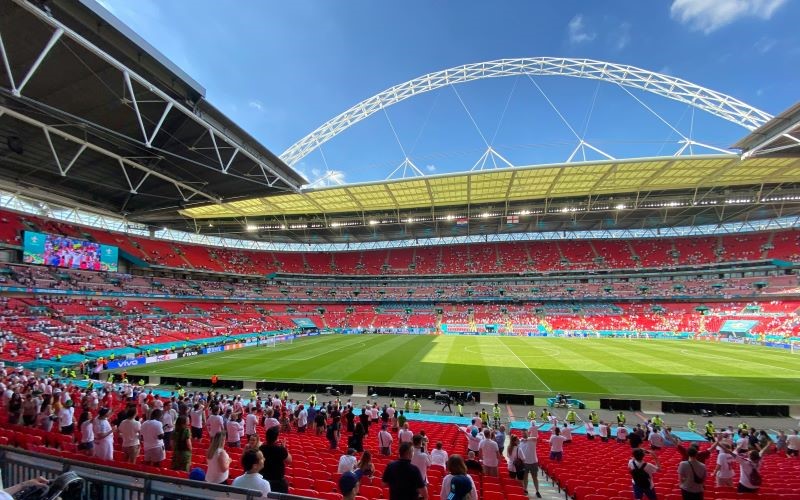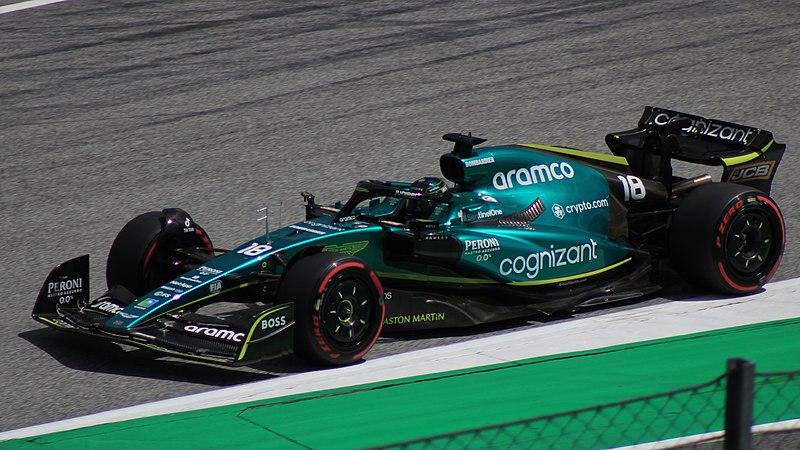Wembley Stadium, located in London, is undeniably one of the most iconic landmarks in British sport and culture.
Boasting a seating capacity of approximately 90,000, it comfortably holds the title as the largest stadium in the UK.
Known as the “Home of Football,” Wembley has hosted countless historic events, from FA Cup finals to international football matches and major cultural events.
Yet, how does Wembley compare to Europe’s most renowned stadiums? In this article, we’ll explore Wembley’s architectural prowess, significance in sports and culture, and how it measures up against the biggest and most prestigious arenas across Europe.
Wembley Stadium: A Brief Overview
Historical Significance and Modernization
Opened in 1923 and famously known as the “Empire Stadium,” the original Wembley hosted numerous memorable events, including England’s legendary victory in the 1966 FIFA World Cup Final.
In 2007, Wembley was completely rebuilt, maintaining its iconic status but introducing advanced architectural design, improved fan experience, and state-of-the-art facilities.
The modern Wembley features a partially retractable roof, cutting-edge amenities, and a distinctive 133-meter-high arch.
Its reconstruction, costing over £757 million, symbolized a new era for British sports infrastructure and significantly boosted its global reputation.
Beyond football, Wembley Stadium hosts a diverse range of events, including rugby, boxing, concerts, and even NFL games.
Its versatility underscores its status as a premier European venue, notably, Wembley regularly hosts concerts featuring global superstars, emphasizing its cultural importance beyond sporting events.
Europe’s Largest Stadiums: A Comparative Analysis
Camp Nou (Barcelona, Spain)
Camp Nou, home of FC Barcelona, is Europe’s largest football stadium, accommodating over 99,000 spectators.
Opened in 1957, Camp Nou is revered for its massive scale, impressive atmosphere, and historical significance within European football.
Camp Nou is structurally distinct from Wembley; while Wembley emphasizes modernity and versatile usage, Camp Nou maintains traditional architecture optimized specifically for football.
The ongoing renovation project “Espai Barça” aims to modernize and expand its capacity to approximately 105,000, setting a new benchmark in European football infrastructure (FC Barcelona Official).
Signal Iduna Park (Dortmund, Germany)
Signal Iduna Park, commonly known as Westfalenstadion, home of Borussia Dortmund, boasts an impressive 81,365 capacity.
It’s widely praised for its electrifying atmosphere, particularly due to the renowned “Yellow Wall” standing terrace.
Unlike Wembley, which balances sports and entertainment versatility, Signal Iduna Park’s reputation rests on its unmatched matchday atmosphere.
The stadium epitomizes passionate football fandom, often considered one of the most intimidating venues for visiting teams.
Santiago Bernabéu (Madrid, Spain)
Real Madrid’s Santiago Bernabéu Stadium, with a seating capacity of approximately 81,044, is another iconic European arena.
Known for its rich footballing history and modern renovations aimed at sustainability and improved fan experiences, it’s often compared to Wembley for its balance of tradition and innovation.
Recent renovations, costing around €575 million, underscore the trend of European stadiums prioritizing modernity and fan engagement—a strategy Wembley pioneered in its 2007 redesign (Real Madrid Official).
Architectural and Functional Comparisons
Architectural Innovation and Design
Wembley’s standout architectural feature is its iconic arch, not only aesthetically pleasing but structurally essential, supporting the stadium’s roof.
In contrast, stadiums like Camp Nou and Santiago Bernabéu embrace more traditional designs, with functional enhancements to maintain historical integrity.
European stadium renovations increasingly prioritize modernity and sustainability, aligning with global trends emphasizing environmental responsibility and technological integration—areas where Wembley has notably excelled.
Fan Experience and Amenities
Wembley Stadium sets a high standard for fan experience. The arena offers luxury seating, extensive hospitality areas, modern catering facilities, and excellent sightlines from all angles.
These amenities significantly enhance spectator comfort, encouraging prolonged visitor stays and higher consumer spending.
In comparison, stadiums like Signal Iduna Park focus more explicitly on fan atmosphere, offering fewer luxury amenities but unparalleled matchday experiences.
Each stadium’s distinct approach underscores the diversity of European football culture.
Broader Cultural and Economic Impact
Wembley’s Cultural Influence
Wembley is deeply embedded in UK culture. Hosting events like Live Aid in 1985 and major concerts from global artists such as Queen, Adele, and Ed Sheeran, Wembley extends beyond sports, becoming a symbol of cultural prestige and British pride.
Comparatively, venues such as Camp Nou or Santiago Bernabéu are predominantly sports-centric, occasionally hosting significant non-sporting events but rarely matching Wembley’s extensive cultural footprint.
Economic Contributions and Local Community Impact
Stadiums generate substantial economic benefits for their respective cities, from tourism to employment opportunities.
Wembley alone injects millions into London’s economy annually through tourism, hospitality, and events.
This economic model is reflected across Europe’s major stadiums, emphasizing not only the cultural but also the financial significance of such infrastructures.
Local businesses significantly benefit from increased footfall, creating lasting community impacts.
Parallels in Digital Entertainment: Diverse Experiences
Much like diverse stadium experiences across Europe, online entertainment platforms offer varied user engagements.
Gamers who appreciate complexity often seek out detailed analyses, such as a Detailed review of gameplay in Big Bamboo by Push Gaming, highlighting precise mechanics and in-depth features.
Similarly, enthusiasts looking for themed experiences appreciate carefully curated options, evident from resources offering a Curated list of recommended animal-themed slots.
This parallels how fans choose stadium experiences tailored to their preferences—whether seeking tradition, atmosphere, modern amenities, or versatility.
Expert Opinions and Personal Reflections
Reflecting personally, having attended events at Wembley and several European stadiums, I find Wembley uniquely balanced, providing both a modern, comfortable visitor experience and maintaining historic significance.
It encapsulates British cultural heritage and contemporary innovations, making it a globally recognized venue.
Sports economist Professor Simon Chadwick noted: “Wembley sets an international standard for modern stadium experiences. Its architectural innovations and multifunctional capabilities are influential benchmarks for stadium developments worldwide.”
Challenges and Future Directions
Sustainability and Environmental Responsibility
Future stadium developments, including at Wembley, will increasingly focus on sustainability, emphasizing renewable energy, efficient resource management, and reduced environmental footprints.
Wembley has already initiated sustainable practices such as waste recycling programs and energy-efficient lighting systems.
Technological Integration and Enhanced Fan Engagement
Technological advancements, including virtual reality (VR), augmented reality (AR), and improved digital connectivity, are future stadium trends.
Wembley’s continuous upgrades ensure it remains at the forefront of these innovations, setting an example for Europe’s stadium developments.
Conclusion: Wembley Stadium—A European Benchmark
Comparing Wembley Stadium to Europe’s greatest arenas reveals its exceptional status—not only as the UK’s biggest stadium but also as a benchmark for architectural excellence, fan experience, and cultural significance.
While Europe’s top stadiums each offer unique qualities, Wembley combines tradition, innovation, versatility, and cultural prestige remarkably.
Its role extends beyond sport, contributing profoundly to local economies and community engagement.
As stadiums across Europe evolve, Wembley remains a pioneering example of balancing heritage and modernity, solidifying its global reputation and enduring legacy.
Featured image credit: Habib Ayoade, free to use under the Unsplash License





